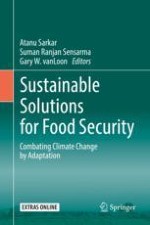2019 | OriginalPaper | Chapter
7. Crop Diversification Through a Wider Use of Underutilised Crops: A Strategy to Ensure Food and Nutrition Security in the Face of Climate Change
Authors : M. A. Mustafa, S. Mayes, F. Massawe
Published in: Sustainable Solutions for Food Security
Publisher: Springer International Publishing
Activate our intelligent search to find suitable subject content or patents.
Select sections of text to find matching patents with Artificial Intelligence. powered by
Select sections of text to find additional relevant content using AI-assisted search. powered by
